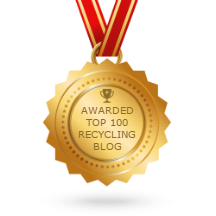 Most of us are by now very much aware of the increasing urgency required to reduce our energy consumption and to try and protect the earth’s potentially dwindling resources. While we all need to assume some collective responsibility, we can also make a difference by assuming a degree of individual responsibility by attempting to reduce our own carbon footprint.
Most of us are by now very much aware of the increasing urgency required to reduce our energy consumption and to try and protect the earth’s potentially dwindling resources. While we all need to assume some collective responsibility, we can also make a difference by assuming a degree of individual responsibility by attempting to reduce our own carbon footprint.
Here are three easy ways that you can make your contribution and lower your carbon footprint.
Recycle
There are many ways that we can look to recycle our waste and actively pursuing this goal can make a difference to your pocket at the same time too.
Reusable bags
Get into the habit of taking a reusable bag every time that you go shopping. Most supermarket bags at the checkout are made of plastic and unless they are 100% pure they are not able to be recycled efficiently and therefore could end up in landfill. Some shops already charge for bags so get a reusable bag and save money as well as protecting the environment.
Use more than once
Try to get more than one use out of as many items as possible. Glass, paper and textiles have all used energy to be created in the first place so it makes sense to find another use for an item to reduce your carbon footprint. Consider turning an old jumper that you were going to throw out into a cleaning cloth and re-use containers for other items once you have consumed or used the original contents.
Paper
Try to find another use for paper such as shredding paper for animal bedding which will also save you money and try to buy recycled toilet paper whenever you can.
Check out www.FibrexGroup.com to find the most budget-friendly, sustainable solutions for your office, home or park area. Providing attractive green design recycling receptacles, site furnishings & amenities in public spaces promotes good environmental stewardship while reducing waste and increasing recycling awareness.
Reduce your energy consumption
There are so many quick and easy ways that you can reduce your energy consumption and it makes a lot of sense when you consider that you are not only reducing your carbon footprint but also saving money on your household bills at the same time.
Low energy bulbs
The cost of the bulbs is coming down all the time as they become more commonplace and you should consider replacing all your old-fashioned bulbs with low energy versions, which will cost considerably less to run and also generally last a lot longer.
Water usage
Try to wash up by hand rather than use the dishwasher and consider fitting a new cistern for your toilet if your current one is more than 10 years old. The new dual-flush versions are much more efficient and will greatly reduce your water consumption.
Standby
Many electrical items are often left on standby mode such as TV’s and laptops and phone chargers are another common item that are left plugged in even when they are not being used. This can account for as much as 25% of your energy consumption in a typical house so switch them off and save money as well as energy.
Use local goods and services
Transportation costs are a big contributor to environmental and resource usage and if you can source goods or services locally you will be benefiting your local economy, generally eating fresher food and also reducing your carbon footprint.
Buy in season
We are so used to seeing the same food items all year round in supermarkets that it has almost been forgotten that a lot of produce is seasonal. Fresh Strawberries in the summer are a real treat but if you are buying them in the winter months, then they will have been transported from another part of the world at a considerable environmental expense before they end up in your bowl.
Grow your own vegetables
Many vegetables are quite easy to grow and don’t require a lot of space, but the benefits are that you get some tasty fresh food that you have grown yourself which is quite satisfying and you are not contributing to transportation costs that weigh so heavily on the environment.
These are just a few ideas and themes to consider but if we all make an effort in our own small way, then the overall effect will surely be a positive one on the environment and our carbon footprint.
*Originally posted on Ways2GoGreenBlog.com – By Clay Miller & Yogesh Mankani
 Beginning in mid-July, it will be easier than ever for members of a university community to recycle.
Beginning in mid-July, it will be easier than ever for members of a university community to recycle.






































